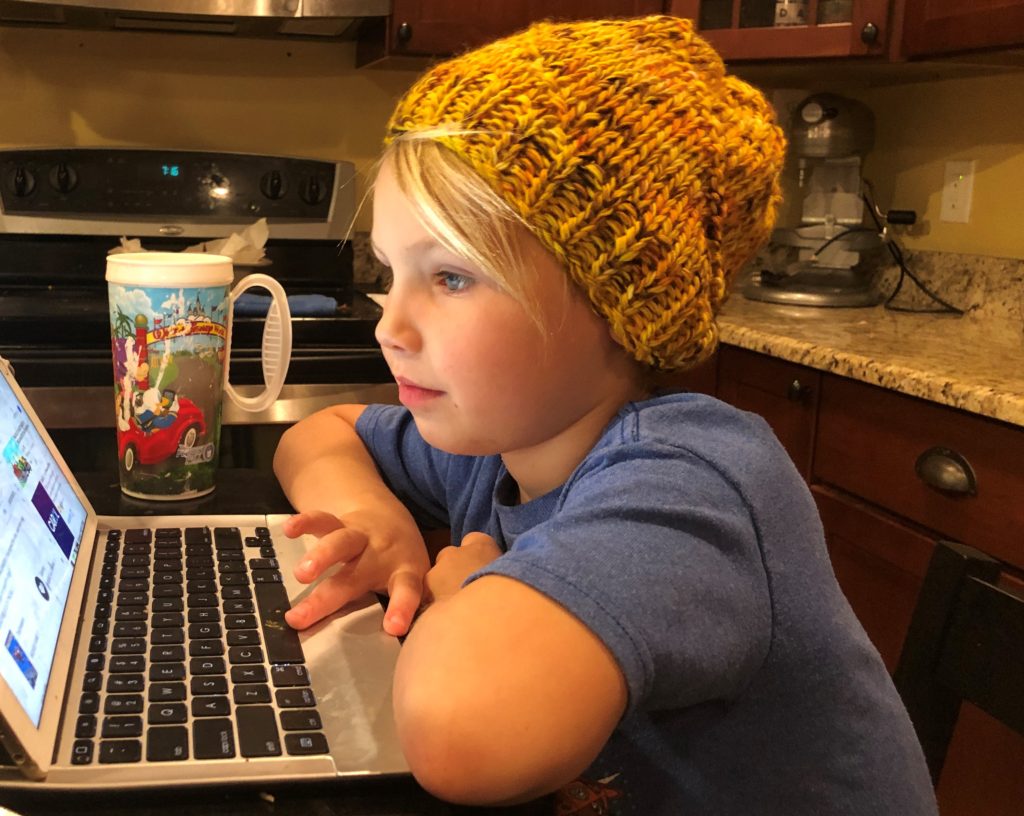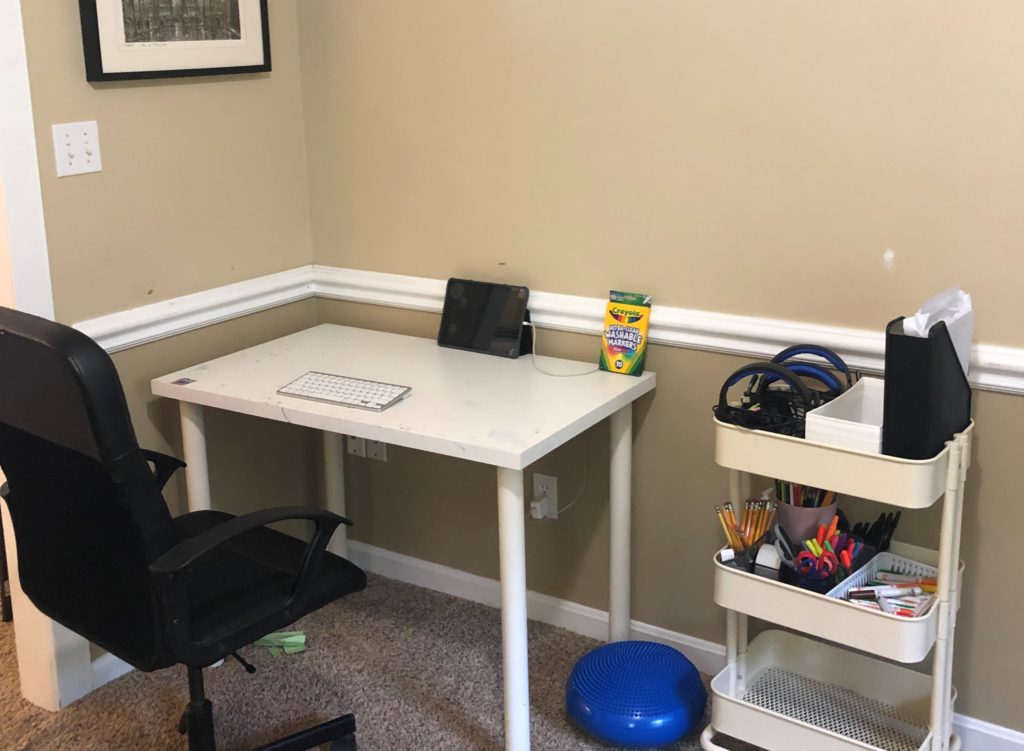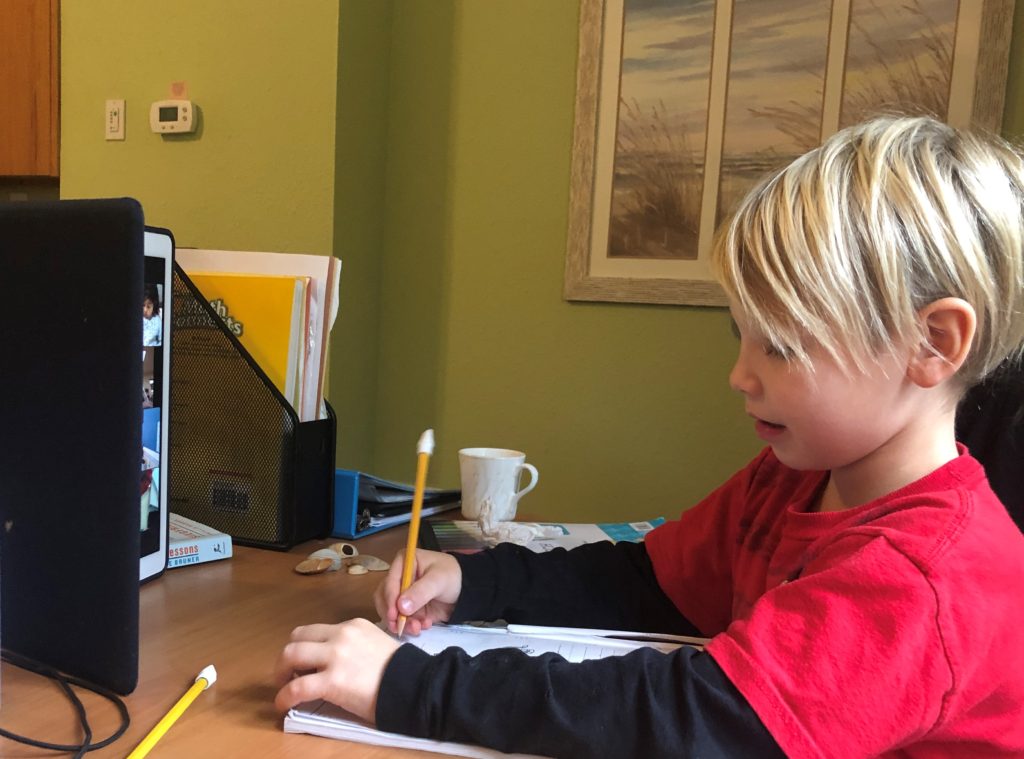Learning On the Go

My children love school.
In March, it was announced that schools in our area would be closing for a few days, then a few weeks, then for the remainder of the academic year. At first they were excited about some time off, but soon enough, disappointment set in.
In September, schools here reopened and they all began attending virtually. There was a steep learning curve, but we had strong support and we were excited to return to learning.
Once we had a handle on virtual learning, we were able to explore how to use it to our benefit!
By luck, we have avoided a lot of the serious issues many families are facing because of COVID-19. With that in mind, we have tried not to spend too much of our time thinking on what was supposed to be in 2020. In fact, if there’s one thing we think we’ve figured out during the pandemic, it’s how to make the best of a bad situation. For us, that includes adapting to learning on the go.

Remote Learning
In our school system, there is a four-day instructional week. School days are Tuesday through Friday. All classes are held via Zoom, but students can also watch the class recordings later. This helps students avoid being marked absent if there are issues with their devices, connectivity, or schedule of if they’re ill. (It is also very handy for reviewing course materials, as we’ve found with both math and Spanish!)
Mondays are used for make-up work, planning (teachers), office hours, and parent-teacher conferences, if needed.
The school day looks a bit different for each of our children because they’re in different schools, grades, and classes. Generally speaking, though, from about 8:00AM until around 3:00PM, someone (or everyone) is in class.
I manage this shuffle with multiple alarms on my phone, ensuring each child is in the correct Zoom room, has a break for lunch, and then heads back in again when it’s time. As we’re months into the process, they’re almost always on track without my reminders, but a change to the environment or schedule can totally throw them off.
The Nuts & Bolts of Learning on the Go
At home, we set up a space for work in the dining room. Aside from tabletops and chairs, we added a clock, a couple posters, and an art wall. Our main bookshelves are also in that room; we added an additional space for coloring and activity books.
It’s intentionally bare bones. We want to be able to pack everything up and go when the opportunity presents itself!

We use a three-tiered rolling cart (sometimes called a kitchen cart) to keep each child’s individual school supplies organized. At one shelf per child, there’s enough room for any books, workbooks, or other supplies, plus their device, charger, and headphones. When we travel, we roll the cart right up to the minivan and it goes with us!
By now we have a good idea of what each child uses weekly, but if we’re going to be gone for a while, we reach out and ask about any specific supplies.
We also use a school supply checklist with our usual packing checklist each time we leave home and each time we leave a destination, ensuring we don’t leave anything essential behind.
I also pack a spare set of collapsible headphones in case one breaks or is lost. (We prefer collapsible because they are easier to transport and less likely to break.) Nothing ruins your ability to concentrate on traffic like the chatter of an entire third grade class right behind the driver’s seat!
Since traveling for school, I’ve added a handful of batteries to our school cart, too. I recommend packing backup batteries for each wireless keyboard, mouse, or any other peripheral you use for school.
We also include a couple folding chairs no matter where we go. Hotels, resorts, and homes have seating, sure, but sometimes it’s only one chair at a single tabletop or desk. A chair converts any flat surface into school space! It also packs easily and is very lightweight.
The Benefits of Learning on the Go
As restrictions have eased, we’ve also been able to travel in ways that were not possible with school five days per week, 36 weeks per year.
We can travel more often because our Wi-Fi hotspot turns our minivan and any hotel we visit into a classroom.
With new schedules, we can take longer trips and go farther from home because every week has a three-day weekend!
We can travel on weekdays because our kids can attend class and complete schoolwork in the car. Departing mid-week also means we can avoid traffic and enjoy lower hotel and resort costs.
Because the school calendar doesn’t tie us to one place, we can travel any time of year. We also benefit from off-season prices at destinations that typically see a “pop” in attendance during Thanksgiving, Winter, and Spring Breaks. We also avoid crowds.
The Limitations of Learning on the Go
It requires us to be tech-savvy. During our first trip, most of my time was spent troubleshooting device issues. We have historically been strict when limiting screen time and social media, so my kids didn’t know how to check battery life, connect to Wi-Fi in a new area, or close browser tabs. We had a steep learning curve!
I recommend being very comfortable with the devices your children are using before departing, especially if you won’t have remote access to a technology support person.
It requires more work. When we arrive in any destination, the first thing we do is set up the workspace. Unpacking and setting up each new workspace requires a bit of time and effort. Not every space is ideal.
It can have an impact on grades. Sometimes my kids miss classes, too. We don’t plan it and it’s rare, but it happens. We’ve been stuck in a spot without Wi-Fi and they couldn’t connect. This means that the time we planned to use for something else has to be spent making up class time, but it could have meant missing key concepts.
Sometimes my kids feel like they’re missing out. When we’re in a beachside condo and my kids have to be at their devices for 6 hours, it is tough. They find it hard to focus.
The same goes for being at their grandma’s house, though. Any new environment brings new distractions and new opportunities. Cramming everything we want to see in the hours between dinner and bedtime can be tricky. They’ve mentioned more than once that they wish we had more time exploring our destinations. But isn’t that always the feeling when you visit somewhere wonderful?
Are you traveling during remote learning?






